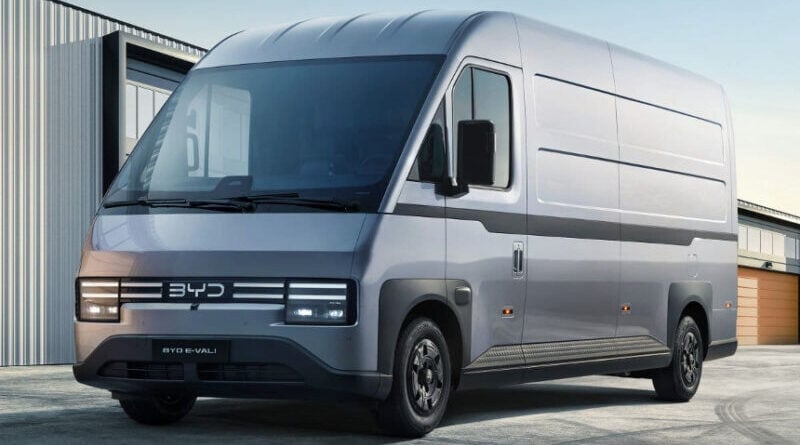A decade ago, Tesla was the electric car company that was leading the world forward into the battery powered future. Today, it has ceded its leadership role to BYD. Where Tesla has failed to introduce new mass market vehicles — it has two, the Model 3 and the Model Y — BYD has dozens. It manufactures a wide range of passenger cars, some of which sell for under $10,000 in China, but it also builds electric buses and commercial trucks for everything from tractor trailers to ambulances, street sweepers, and trash trucks. It also builds electric delivery vans to serve the needs of tradespeople, grocery stores, and anyone else who needs “last mile” trucks that bring stuff from distribution centers and deliver it to end uses.
This week at the IAA Transportation 2024 show in Hanover, Germany, BYD is introducing the E-Vali, a battery-powered electric delivery van designed to meet the needs of European customers. One delivery van looks very much like every other delivery van — a box on wheels. The issue is not style but efficiency. How quickly and easily can a driver load and unload the van? How easy is it to drive on narrow streets in congested European cities? What is the total cost of ownership including fuel, maintenance, repairs, insurance, depreciation, and all the other little bites that plagued businesses and reduce their net income?
The BYD E-Vali comes in two sizes — pretty big and even bigger. The first has a wheelbase of 3.9 meters (12.8 ft) and 13.9 cubic meters (500 cu. ft) of cargo space with a total weight of 3.5 metric tons (7700 lb). The larger van has a wheelbase of 4.55 meters (15 ft), room for 17.9 cubic meters (632 cubic feet) of cargo space, and a total weight of 4.25 metric tons (9,400 lb). Cargo capacity for the smaller van is 700 kg (1550 lb) and 1450 kg (3200 lb) for the larger van. In order to make the E-Vali appealing for last-mile and parcel delivery, it had been designed with wide-opening rear doors and a relatively tall roof to allow the driver to stand upright in the vehicle while loading and unloading.
In the what makes it go department, the BYD E-Vali has either a single motor driving the rear wheels with a maximum of 150 kW (200 hp) or an all-wheel-drive version with an additional 100 kW (135 hp) motor driving the front wheels. Both are equipped with a BYD-derived LFP blade battery with a nominal capacity of 80.6 kWh. Expected range is quoted as 220 to 250 kilometers (140 to 155 miles) in the WLTP cycle used in Europe.
I’m sure this will not have any problems selling them /s
https://insideevs.com/news/712148/byd-quality-problems-hit-international-markets/



